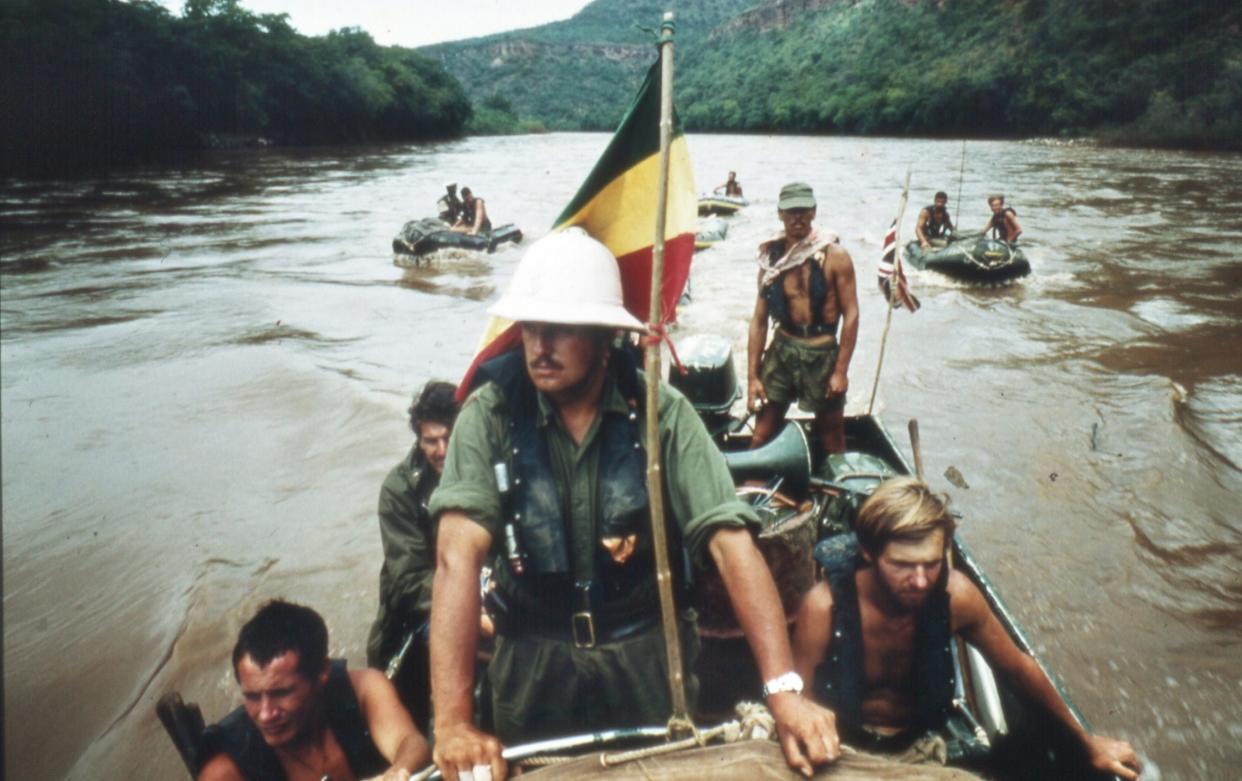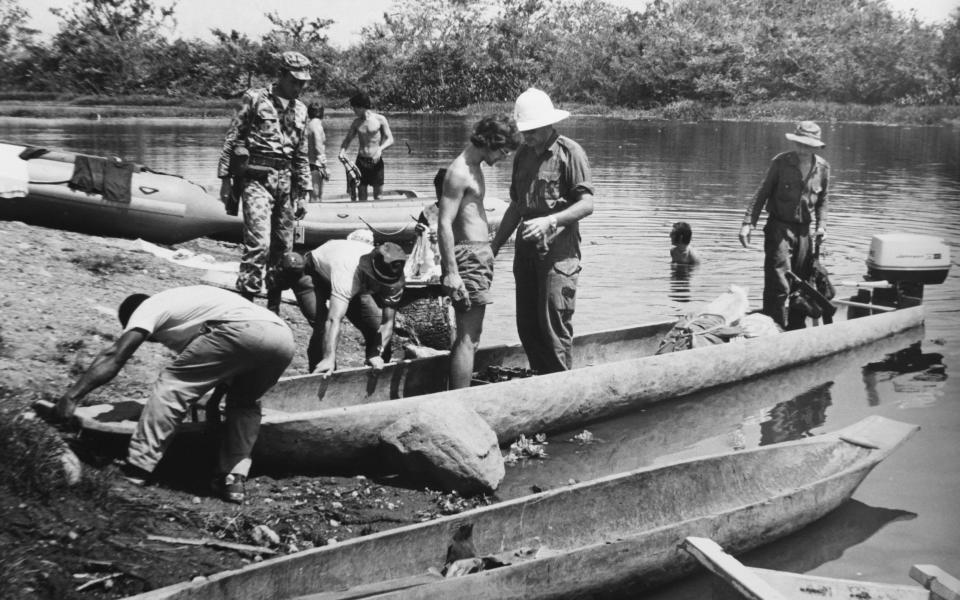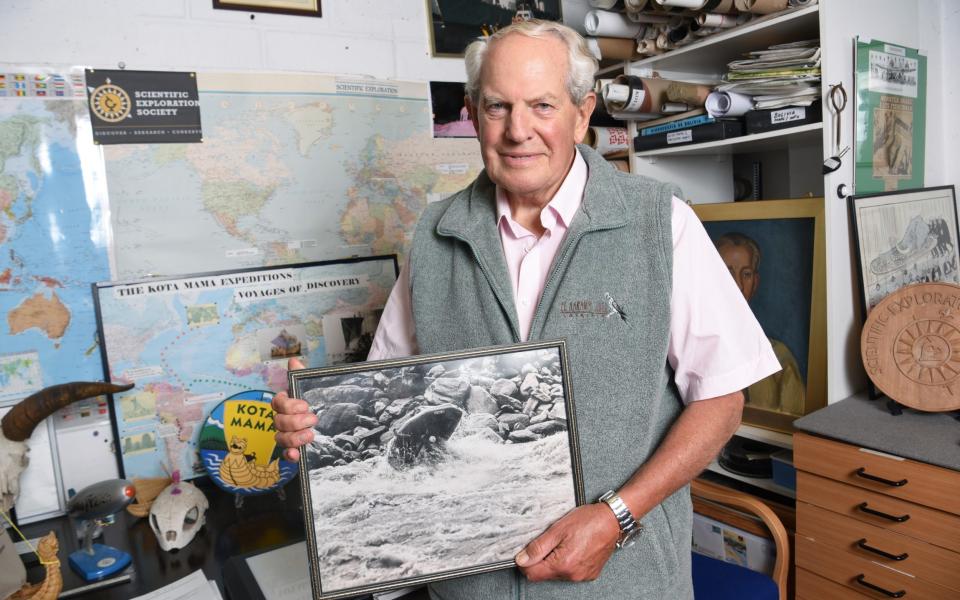We were shot at exploring the Blue Nile. ‘We come in peace and have Mars bars’, I shouted

Col John Blashford-Snell CBE, 86, is a former British Army officer and a renowned explorer and author. He has led more than 100 expeditions, including the first ever descent of the Ethiopian Blue Nile (1968), the first vehicle crossing of the Darien Gap between Panama and Colombia (1971‑72) and the navigation of almost all 2,700 miles of the Zaire (now Congo) River in Africa (1974‑75).
In 1969 he founded the Scientific Exploration Society, which fosters and encourages scientific exploration worldwide. In 1978 he established Operation Drake, which in 1984 developed into Operation Raleigh; it enables thousands of young people to take part in challenges around the world. He lives in Dorset with his wife, Judith. They have two daughters.
Did you have a prosperous start in life?
My father, an Army chaplain, was as poor as a church mouse. My parents married in Jersey and moved to New Zealand, where my father was ordained. He also joined the local Territorial Army regiment there, where he became a chaplain.
By the time I arrived in 1936, my father had taken on a parish in Herefordshire. I grew up in a parsonage surrounded by animals.
My mother, a squire’s daughter who could claim Louis XV, Oliver Cromwell and Judge Jeffreys among her ancestors, was a passionate animal lover. We had 28 cats until she discovered I was allergic to them. We even had a monkey, an ex-regimental mascot that my father brought home.
I was an only child and lived a fairly wild life as a youngster. My parents never had much money, but my mother was wonderful at making do.
We always had a cellar with rabbits hanging up, plentiful eggs from our chickens and lots of home-grown vegetables. The war taught us to be self-sufficient. When the war ended I was sent to school in Jersey.

What was your first job?
I used to earn money ringing the church bell. Getting up at 7am on a winter’s morning to encourage a few faithful became too much, so I developed a system where I could ring the bell from my bedroom window with a few well-aimed shots from my 300-calibre rook rifle.
It worked well, but years later I received a letter from the vicar asking if I would give a fundraising talk because the church roof needed urgent repairs. It was only then I realised that a number of my bullets had passed through the roof and done lasting damage.
When did you join the Army?
I was commissioned into the Royal Engineers in 1957. I was lucky to get into the “Sappers” because I wasn’t particularly good at mathematics, but they had a tradition of accepting people who were mad, married and Methodists, so they took me on.
Later I returned to Sandhurst as an adventure training officer. The commandant, Gen Sir John Mogg, said: “I want you to get as many youngsters as possible overseas for the benefit of their character and the least possible detriment to the Empire.”
Hundreds of cadets passed through my hands, although they didn’t do anything military. During their long overseas vocation they did community aid, building schools, clinics and hospitals, and collecting bugs and beetles for the Natural History Museum.
How did you become an expedition leader?
One of the areas we visited, through my godfather, was Ethiopia. He had got to know Emperor Haile Selassie, who looked after us well. At the end the Emperor said: “By the way, I hope you’ll come back to my empire. I’d like you to explore my Blue Nile.” Well, that was a bit like asking your average hill walker to climb Everest. It was a terrible river full of rapids, bandits, crocodiles, hippos and radioactive gas.
However, when I shared my reservations with another adventurous general called Sir Napier Crookenden, he scolded me and said it was just the sort of thing we should be doing. It would be good for morale.

How did you fund your first expedition?
We needed to raise about £3,000, which by the standards of the day was quite a lot. I was put in touch with John Anstey, the then editor of The Telegraph Magazine, and a famous character called Harbourne Stephen, managing director of The Daily Telegraph, who had been a fighter ace in the war.
They agreed to back us in return for our exclusive story. They sent Chris Bonington with me to send reports back via Morse code and take photographs. I also raised money by writing to charities and companies, and the Army agreed to sponsor us.
I led a 60-strong party, which included a team of scientists. The river had never been navigated and we were attacked several times by bandits. When we first came under fire I called out, using my limited Amharic: “We come in peace. Would you like some Mars bars?” I thought they were going to accept, but then a bullet landed between my feet. I realised then that the only way to escape was to fight our way out.
It made an incredible adventure story. Books and a television movie were subsequently produced. The Telegraph also agreed to support subsequent expeditions.
How did Operation Drake come about and how did you finance the voyage?
Several young people had taken part in the navigation of the Zaire River and afterwards they lectured to schools and universities, inspiring an Elizabethan spirit of adventure.
The then Prince of Wales heard about this and said: “If you can do this with two or three youngsters, why can’t you do it with 200 or 300?” As a result, Operation Drake was born – a two-year round-the-world voyage involving youngsters in a bended boat called Eye of the Wind. Our aim was to retrace Sir Francis Drake’s epic circumnavigation on the 400th anniversary.
When the Prince asked how we were going to fund the trip, I suggested he drop a line to one or two people. He agreed and wrote to the American businessman and diplomat Walter Annenberg, then one of the richest men in the world. He donated the first £100,000, which got the operation off the ground.
The voyage was such a success that when we were half way round the world the Prince said: “You can’t stop now. Make it bigger. Do it again.” I was horrified because the cost had nearly broken us. We actually ended up with a small excess of £5,000 on a turnover of £1m, but it was a close-run thing.
When we launched Operation Raleigh we had no money at all and had to start from scratch. I drummed up finances through lecturing and writing to old sponsors, and thankfully Annenberg was even more generous.
What are your current sources of income?
I have a small Army pension and some investments. I also do a lot of public speaking and write books. I’ve just published my memoirs, partly to raise funds for the Scientific Exploration Society.
What has been your best investment?
Our house in Dorset. It’s a 19th-century farmhouse, with land attached, and we’ve expanded it quite a bit. We bought it in 1990 and it’s worth a lot more now. I also inherited a potato field in Jersey, which I rent out. The Jersey Royals [Jersey’s largest potato grower] send me a bag of potatoes every year.
From Utmost East to Utmost West: My Life of Exploration and Adventure by John Blashford-Snell is published by Bradt Guides at £14.99. For autographed copies (£19 incl p&p), email jenny@ses-explore.org


